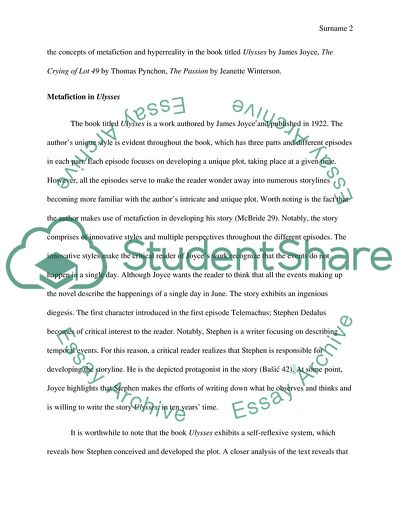Cite this document
(Fiction, Truth, and Reality in Modernist Literature Book Report/Review, n.d.)
Fiction, Truth, and Reality in Modernist Literature Book Report/Review. Retrieved from https://studentshare.org/literature/1857187-discuss-the-relationship-between-fiction-truth-and-reality-in-modernist-andor-postmodernist-literature
Fiction, Truth, and Reality in Modernist Literature Book Report/Review. Retrieved from https://studentshare.org/literature/1857187-discuss-the-relationship-between-fiction-truth-and-reality-in-modernist-andor-postmodernist-literature
(Fiction, Truth, and Reality in Modernist Literature Book Report/Review)
Fiction, Truth, and Reality in Modernist Literature Book Report/Review. https://studentshare.org/literature/1857187-discuss-the-relationship-between-fiction-truth-and-reality-in-modernist-andor-postmodernist-literature.
Fiction, Truth, and Reality in Modernist Literature Book Report/Review. https://studentshare.org/literature/1857187-discuss-the-relationship-between-fiction-truth-and-reality-in-modernist-andor-postmodernist-literature.
“Fiction, Truth, and Reality in Modernist Literature Book Report/Review”. https://studentshare.org/literature/1857187-discuss-the-relationship-between-fiction-truth-and-reality-in-modernist-andor-postmodernist-literature.


